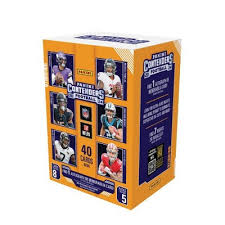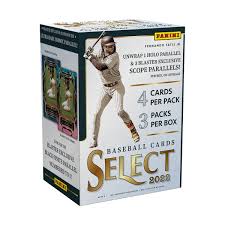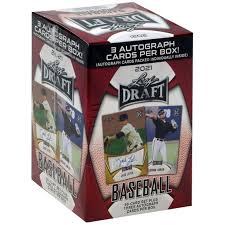

As we’ve written about before, getting a card graded and scoring a mint is one of the easiest ways to make a lot of money in the hobby.
And while it’s important to know how to grade, it’s also important to know what to grade. To help with that, here’s a guide to help you decide which cards you should get graded.
While I won’t start by beating you over the head with all the obvious sports card grading know-how, I do want to address a popular point of conversation lately…
Grading companies.
During the sports card boom, the exploding value of cards caused a few new companies to open up doors. You probably know who they are – I don’t need to name them.
So is it worth grading your cards with a new company? We get that question a lot at CardLines.
Honestly? My gut says “no.” The only three services that have stood the test of time are PSA, BGS and SGC – in that order. I’d only use the first two, personally.
And I’m not a fan of either BGS or PSA. PSA has some of my cards on a “60-day submission” that I sent nearly 18 months ago. There are a dozen Jokic rookies and I was hoping to get them back after Nikola Jokic won his first MVP. Now I’m hoping to get them back after he wins his second.
The wait times are ridiculous and the companies as a whole seemed pretty mismanaged in several facets of the business, but I will still stick to my guns here: if you’re hoping for the best long-term value, you should grade with one of the three companies that have already withstood the tests of time.
Everything else, most likely, will become a relic of the 2020s.
So now you know what companies you can trust with grading your cards, but what should you grade?
There are two parts to this answer. You only want to grade 1) cards that are in good condition 2) that are valuable enough to grade.
To address the first part, condition, the following are the 4 points that most grading companies take into consideration. At BGS, these are “subscores.” PSA factors in an abstract “eye appeal” which is their way of adding something that can’t be quantified to the grading process to hedge against frequent human error.
Here are the four points and how to check for them.
You want a surface without scratches or indentions. The easiest way to check the surface of a card is by finding a great light source and angling your card to get the best light reflection. I try to go outside and use the sun – not joking.
Bonus points if you take a magnifying glass with you. Bonus points from me, at least. Your wife will probably roll her eyes if you’re caught doing this.
Corners are probably the most commonly flawed physical element of the card, and a lot of that comes from damage that happens before they’re ever unwrapped.
To check the corners, look closely at both the front and back corners of the card. You want them to look sharp with no bend or “whitening.” That said, one soft corner (preferably on the back of the card) isn’t enough to make it ungradable.
With newer cards, the edges are typically in pretty good condition. That said, you still want to look at them closely and in good light. You don’t want to see “chipping,” which is incredibly common among 10+-year-old cards with a dark background border. And you don’t want indentions or any other physical flaw.
If the corners are the most common physical flaw, centering is the most common cosmetic flaw. Panini, perhaps more than any other card Titan, struggles with centering. You want your cards to be as perfectly centered as possible.
Per PSA, a PSA 10 can have 60/40 centering so there is some leniency, but that’s assuming the rest of the card is perfect.
Now that we talked about the physical, let’s talk about which cards you should consider grading. Here are the four most commonly graded cards.
Rookies are the most frequent cards to grade. I have zero data to support this, but I’d guess that 75% of graded cards are rookies. They’re a special card – documentation of a player’s entrance to the league and a nod to his potential – and sell for the biggest bucks.
Vintage cards have a high upside and are nice to grade because there are lower expectations. With some older cards, a PSA 6 is a grade to celebrate. When you’re considering grading your vintage cards, do some research on what each grade sells for and realistically estimate what your cards will be worth.
Parallels are becoming increasingly popular for grading, particularly numbered versions of star players. If you have a LeBron, Brady, Mahomes, Luka or another big-name star land a PSA 10 in a colored parallel, you’re looking at some big bucks.
Autographs and patch autographs are frequently graded, too, and the beauty of grading these thicker cards is the lower expectations that collectors have for them.
An RPA is going to be a thick card and it’s expected for the corners or edges to show a bit of wear, so a BGS 8 is totally an acceptable grading. Big hits are graded more as a means of protecting and improving the cosmetics than chasing an elusive Get Mint.
Finally, as somebody who has graded quite a bit over my years of collecting, I’d like to share a few secrets for getting the most out of it.
Population reports can show you how rare your graded card is (or how the cards generally grade). If there are 10,000 PSA 10s of a certain card but only 300 of another, you know the supply is a lot lower and can factor that into your pricing.
PSA and BGS both have population reports on their website and while they’re a bit clunky (particularly BGS), they can still tell you everything you need to know.
If you are trying to decide what cards to grade and what you should pass on, always do your research. eBay is a great place to start.
Every time I submit cards, I make a spreadsheet to calculate my potential return on investment. I list out the card, its raw selling price, the worst-case grade I imagine it getting, and how much that sells for on eBay. Pro-tip: don’t ever estimate your cards will grade a 10, even if it seems perfect.
Let’s say I have a Steve Nash Topps Chrome Rookie that I estimate, worst-case, will grade an 8. Raw, that card sells for about $25. Graded it sells for $80. That means I can still pay the $30 economy grading fee and increase the value by $25 if it gets a harsh grade. With that particular card, I’d go for it.
If you’re an optimist, you can make a column that’s “what I think my card will grade.” It’s a good way to guess what returns you’ll generate.
In the end, your table totals will look something like this.
| Cards | Raw Total | Grading Cost | Worst-Case | Estimate |
| XYZ | $1225 | $300 | $1,800 | $2,530 |
In this case, your raw total + grading fee shows there’s room for profit either way.
Finally, don’t be afraid to be an annoying buyer if you’re buying cards on eBay that you’re thinking of grading. It’s okay to be brutally honest and message the seller, “Hey there, I’m thinking of buying this to grade. Can you please look it over closely and let me know what flaws you see?” Or “Would you send close-ups of the corners?”
If you’re doing this for a $25 card, don’t expect a response. But on a more big-ticket card, it’s always nice to check before you buy.
If you know what to grade, you can make a great profit off it if you know what you’re doing.. We’d love to hear your grading experience, thoughts, and points. Just share with us on Twitter @card_lines.
🚨 BREAKING: $400M sports card and memorabilia scam busted. Dead body found.
What you need to know about Cal Raleigh 👀
Top 5 Sports Card Athletes to invest in RIGHT NOW (big ROI potential!)
 0:58
0:58
The best small town card shop? 👀
Sports Card Scavenger Hunt! (5,000 Subscriber Special!)
I hit a SWEET auto from the #1 overall pick at PCB hobby
The Ultimate 2024 Football Card Brand Tier List (Panini vs. Topps and more!)
2025 Topps All Star Game Mega Box Product Review








2022 Topps Heritage Baseball Blaster Box Configuration: 7 Packs per Box – 9 Cards per Box. Plus 1 extra pack.








Keep up on breaking Sports Card News, our latest articles, product specials and exclusive content with expert analysis of hobby trends.

© Copyright 2025 - All rights reserved Cardlines.com / Media Techs LLC - Sports Card News, Reviews, Releases and BREAKS - #thehobby.
Important: When you click on links to various merchants on this site and make a purchase, this can result in this site earning a commission. Affiliate programs and affiliations include, but are not limited to, the eBay Partner Network.
Everything you should know about the 2025 National (plus more!)
Cardlines 11 hours ago